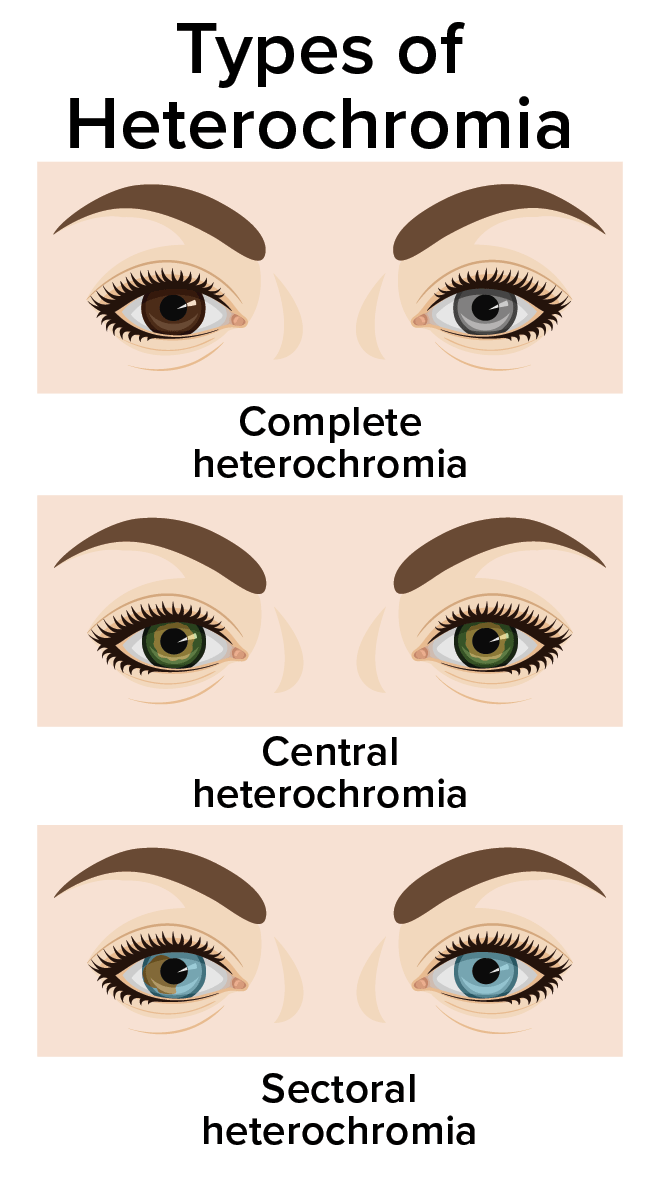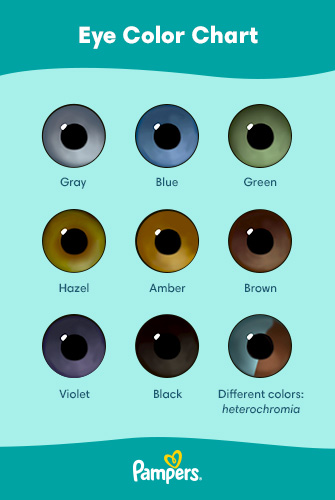Why Does Eye Color Change (Naturally)? The Complete Science Behind Eye Color Transformation

- Understanding the Basics: What Determines Eye Color?
- The Genetics Behind Eye Color: More Complex Than You Think
- Baby Eye Color Change: The Most Dramatic Natural Transformation
- Adult Eye Color Change Causes: When and Why Eyes Change Later in Life
- Medical Conditions That Can Change Eye Color
- The Science of Color Perception: Why Eyes "Appear" to Change
- Predicting Eye Color Changes: What to Expect
- Myths vs. Facts About Eye Color Changes
- The Future of Eye Color Science
- Practical Implications: Living with Eye Color Changes
- Eye Color and Identity: The Psychological Impact
- Protecting Your Eye Color and Eye Health
- Conclusion: Embracing Natural Eye Color Changes
- FAQ: Why Does Eye Color Change Naturally? (2025)
Have you ever wondered why does eye color change naturally throughout our lives? Whether you're a new parent watching your baby's eyes evolve or an adult who's noticed subtle shifts in your own eye color, understanding the science behind natural eye color changes is both fascinating and complex. This comprehensive guide explores everything from baby eye color change to adult eye color change causes, diving deep into the role of melanin eye color genetics and the remarkable processes that shape our most distinctive feature.
Understanding the Basics: What Determines Eye Color?
Before exploring why eye color changes, it's essential to understand what creates eye color in the first place. Your eye color is primarily determined by melanin—the same pigment that affects your skin and hair color.
The Role of Melanin in Eye Color
:max_bytes(150000):strip_icc()/genetics-of-eye-color-3421603-charttext-final-f7055926c9ab4705a69da4368c49fdd4.png)
Melanin exists in your iris in two forms:
- Eumelanin: Creates brown and black pigmentation
- Pheomelanin: Contributes to lighter colors and can create amber tones
The amount and distribution of these melanin types determine your eye color:
- High melanin concentration: Brown or black eyes
- Moderate melanin levels: Green, hazel, or amber eyes
- Low melanin concentration: Blue or gray eyes
The Genetics Behind Eye Color: More Complex Than You Think
Key Genes Controlling Eye Color
Recent scientific research has identified that more than 16 genes contribute to eye color determination Nature. The two most important are:
OCA2 Gene (Oculocutaneous Albinism II)
- Located on chromosome 15
- Controls 75% of eye color variation
- Directly regulates melanin production in the iris
- High activity = brown eyes; low activity = blue eyes
HERC2 Gene (HECT and RLD Domain Containing E3 Ubiquitin Protein Ligase 2)
- Acts as a "master switch" for the OCA2 gene
- Contains regulatory sequences that turn OCA2 on or off
- Specific variants can completely shut down OCA2, resulting in blue eyes
How These Genes Work Together
The relationship between OCA2 and HERC2 is crucial:
- HERC2 acts as the regulatory control
- It determines whether OCA2 can produce melanin
- The combination creates the final eye color phenotype
Baby Eye Color Change: The Most Dramatic Natural Transformation

One of the most remarkable examples of natural eye color change occurs in infants. Understanding baby eye color change helps explain the broader mechanisms of eye color transformation.
Why Babies Are Often Born with Blue Eyes
At birth, most babies—particularly those of European descent—have blue or gray eyes due to:
- Low melanin production: Melanocytes (melanin-producing cells) are present but not yet fully active
- Light scattering: Blue color results from light scattering in the iris stroma (Tyndall effect)
- Immature melanin pathways: The genetic machinery for melanin production hasn't fully activated
The Melanin Development Timeline
Birth to 3 months:
- Minimal melanin production
- Eyes typically appear blue or gray
- Some initial melanin deposition may begin
3-6 months:
- Melanin production increases significantly
- First noticeable color changes occur
- Light exposure helps activate melanin production
6-9 months:
- Most dramatic changes occur during this period
- Melanin continues accumulating in the iris
- True eye color begins to emerge
9-12 months:
- Eye color stabilizes but may continue subtle changes
- Final color usually established by first birthday
- Some children may see changes until age 3
Factors Affecting Baby Eye Color Development
Several factors influence how a baby's eye color develops:
Genetic Heritage
- Both parents' eye colors contribute
- Dominant genes (brown) typically override recessive genes (blue)
- Multiple gene interactions create complex inheritance patterns
Light Exposure
- Natural light helps activate melanin production
- Babies in darker environments may develop color more slowly
- UV exposure is not necessary—ambient light is sufficient
Ethnic Background
- Babies of African, Asian, or Hispanic descent often have more melanin at birth
- These babies typically develop darker eye colors earlier
- European-descent babies show the most dramatic color changes
Adult Eye Color Change Causes: When and Why Eyes Change Later in Life

While dramatic eye color changes are rare in adults, subtle shifts can occur throughout life. Understanding adult eye color change causes helps distinguish between normal variations and changes that may require medical attention.
Natural Aging and Eye Color
Gradual Darkening (20s-40s)
- Long-term sun exposure can increase melanin production
- Eyes may appear slightly darker over decades
- More common in people with lighter initial eye colors
Lightening with Age (50s and beyond)
- Affects approximately 10-15% of Caucasian adults
- Melanin production may decrease with age
- Iris structure changes can affect light reflection
Environmental Factors Affecting Eye Color
Sun Exposure Effects
- UV radiation can stimulate melanin production
- Gradual darkening over years of exposure
- More pronounced in people who spend significant time outdoors
Seasonal Variations
Many people notice their eyes appear different in various seasons due to:
- Lighting conditions: Natural vs. artificial light affects perception
- Clothing colors: Surrounding colors influence how we perceive eye color
- Pupil size changes: Different lighting causes pupil dilation/constriction
Hormonal Influences on Eye Color
Pregnancy
- Hormonal changes can affect melanin production
- Some women report subtle eye color shifts during pregnancy
- Changes are usually temporary and reverse post-pregnancy
Puberty
- Hormonal surges can cause minor eye color adjustments
- Usually involves slight darkening or intensification
- Changes are typically permanent once hormones stabilize
Medical Conditions That Can Change Eye Color
Heterochromia: When Eyes Are Naturally Different

Heterochromia represents a fascinating example of natural eye color variation:
Types of Heterochromia
- Complete Heterochromia: Each eye is a completely different color
- Partial (Sectoral) Heterochromia: Part of one iris is a different color
- Central Heterochromia: The inner ring around the pupil differs from the outer iris
Causes of Heterochromia
- Congenital: Present from birth due to genetic variations
- Acquired: Develops later due to injury, disease, or medication
- Benign variations: Usually harmless and purely cosmetic
Pathological Eye Color Changes
Glaucoma
- Can cause the iris to appear lighter or darker
- Results from increased intraocular pressure
- May cause permanent structural changes
Cataracts
- Can make eyes appear cloudy or change perceived color
- Affects light transmission through the lens
- Color perception may be altered
Medication Effects
Certain medications can influence eye color:
- Prostaglandin analogs (glaucoma treatments): Can darken light-colored eyes
- Corticosteroids: May affect iris pigmentation
- Antihistamines: Can temporarily affect pupil size and color perception
The Science of Color Perception: Why Eyes "Appear" to Change
Optical Illusions and Eye Color
Many reported eye color changes are actually perceptual variations rather than actual pigment changes:
Rayleigh Scattering
- Affects how light interacts with the iris
- Explains why blue eyes can appear different shades
- Similar to why the sky appears blue
Clothing and Makeup Effects
- Complementary colors enhance certain eye tones
- Green clothing can make hazel eyes appear more green
- Purple or blue tones can intensify golden flecks
Lighting Conditions
- Fluorescent light vs. natural sunlight creates different appearances
- Camera flash can dramatically alter perceived eye color
- Indoor vs. outdoor lighting affects color saturation
Psychological Factors
Attention and Memory
- We may notice eye color changes when paying closer attention
- Memory of past eye color may be inaccurate
- Emotional significance can affect how we perceive and remember colors
Predicting Eye Color Changes: What to Expect
For Parents: Baby Eye Color Predictions

While genetics is complex, some general patterns exist:
Both Parents with Brown Eyes
- 75% chance of brown-eyed child
- 18% chance of green/hazel eyes
- 6% chance of blue eyes
One Brown-Eyed, One Blue-Eyed Parent
- 50% chance of brown eyes
- 37% chance of green/hazel eyes
- 12% chance of blue eyes
Both Parents with Blue Eyes
- 99% chance of blue-eyed child
- 1% chance of other colors (due to genetic mutations)
For Adults: When to Expect Changes
Normal Variations
- Subtle seasonal changes
- Gradual darkening/lightening over decades
- Temporary changes due to health, emotions, or environment
When to Consult a Doctor
- Sudden, dramatic color changes
- Changes accompanied by pain or vision problems
- New onset of heterochromia in adulthood
- Changes following eye injury or surgery
Myths vs. Facts About Eye Color Changes
Myth: Diet Can Change Eye Color
Fact: No foods can alter iris pigmentation, though certain foods might affect overall eye health and clarity.
Myth: Emotions Change Eye Color
Fact: Emotions can affect pupil size and blood flow, creating the illusion of color change, but don't alter actual pigmentation.
Myth: Weather Affects Eye Color
Fact: Weather influences lighting conditions and pupil size, affecting how eye color appears, but doesn't change actual pigment.
Myth: Eye Color Changes Are Always Permanent
Fact: Some changes (like those from pregnancy hormones) can be temporary, while others (from sun exposure) may be permanent.
The Future of Eye Color Science
Emerging Research Areas
Epigenetics and Eye Color
- How environmental factors influence gene expression
- Understanding why some people's eyes change more than others
- Role of lifestyle factors in melanin production
Advanced Genetic Testing
- More accurate eye color prediction tools
- Understanding rare genetic variations
- Personalized medicine approaches to eye health
Regenerative Medicine
- Potential treatments for genetic eye color disorders
- Understanding melanocyte function and regulation
- Future therapeutic applications
Technology and Eye Color Analysis
AI-Powered Color Analysis
- More precise measurement of eye color changes
- Pattern recognition in color development
- Predictive modeling for eye color inheritance
Advanced Imaging Techniques
- High-resolution iris photography
- Melanin distribution mapping
- Real-time color change tracking
Practical Implications: Living with Eye Color Changes
For Parents Monitoring Baby Eye Color
Documentation Tips
- Take photos in consistent lighting conditions
- Use natural light when possible
- Document changes monthly for the first year
- Note any family history of eye color patterns
What's Normal vs. Concerning
Normal changes include:
- Gradual shifts from blue to brown/green/hazel
- Symmetric changes in both eyes
- Progression that follows typical timelines
Concerning signs:
- Sudden, asymmetric changes
- White spots or cloudiness
- Changes accompanied by light sensitivity
- Rapid changes after initial stabilization
For Adults Experiencing Eye Color Changes
Monitoring Strategies
- Regular eye exams with an ophthalmologist
- Photography in consistent conditions
- Tracking any associated symptoms
- Maintaining records of medications and health changes
When to Seek Medical Attention
- Any sudden or dramatic color changes
- Changes associated with vision problems
- New asymmetry between eyes
- Changes following injury or illness
Eye Color and Identity: The Psychological Impact
Cultural Significance of Eye Color
Different cultures place varying importance on eye color:
- Some societies associate certain eye colors with specific traits
- Media representation can influence preferences
- Understanding natural variation helps combat colorism
Dealing with Unexpected Changes
For Parents
- Embrace your child's unique development
- Understand that eye color doesn't determine beauty or worth
- Prepare family for potential changes if genetics suggest it
For Adults
- Accept natural aging processes
- Focus on eye health over cosmetic concerns
- Celebrate the uniqueness of your natural features
Protecting Your Eye Color and Eye Health
Sun Protection
UV Safety Measures
- Wear UV-protective sunglasses
- Use wide-brimmed hats in bright sunlight
- Limit prolonged sun exposure without protection
- Choose sunglasses that block 99-100% of UV rays
General Eye Health
Nutrition for Eye Health
- Antioxidant-rich foods (carrots, leafy greens)
- Omega-3 fatty acids for overall eye function
- Adequate hydration for optimal eye moisture
- Vitamins A, C, and E for cellular health
Regular Eye Care
- Annual comprehensive eye exams
- Prompt treatment of eye infections or injuries
- Proper contact lens hygiene if applicable
- Recognition of warning signs requiring immediate care
Conclusion: Embracing Natural Eye Color Changes
Understanding why does eye color change naturally helps us appreciate the remarkable complexity of human genetics and development. From the dramatic baby eye color change that occurs in the first year of life to the subtle adult eye color change causes that can affect us throughout our lives, these transformations represent the dynamic interplay between our genes, environment, and biology.
Key takeaways:
- Eye color changes are usually normal and expected, especially in babies
- Melanin eye color genetics involve multiple genes working together
- Most adult changes are subtle and occur over long periods
- Sudden or dramatic changes warrant medical evaluation
- Understanding the science helps distinguish normal variation from medical concerns
Whether you're watching your baby's eyes develop their permanent color or noticing subtle changes in your own eyes over time, remember that these variations are part of the beautiful diversity of human biology. Each person's eye color journey is unique, influenced by their individual genetic makeup, environmental factors, and life experiences.
Your eyes tell the story of your genetic heritage and life journey. By understanding the natural processes behind eye color changes, you can better appreciate these remarkable features while knowing when changes might require medical attention. Remember that regardless of color—brown, blue, green, hazel, or any variation—your eyes are uniquely yours and deserving of care and protection throughout your life.
This article is for informational purposes only and should not replace professional medical advice. Always consult with a qualified eye care professional for concerns about eye color changes or overall eye health.
FAQ: Why Does Eye Color Change Naturally? (2025)
Sources:

Leave a Reply